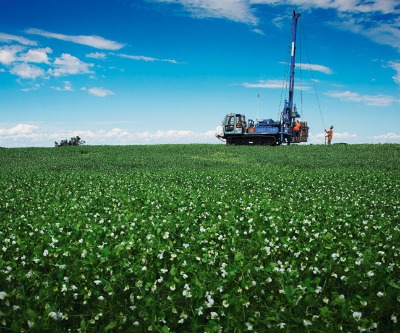Megaproject moratorium lifted: BHP’s Jansen potash decision could be weeks away

BHP Billiton’s (LON:BHP) Jansen project in Saskatchewan, Canada has the potential to become the world’s biggest potash mine.
But the world’s largest mining company has put the future of the project in doubt as a result of its austerity program to cut back on a pipeline of $80 billion worth of large scale projects amid declining metals and minerals prices.
BHP’s $30 billion Olympic Dam uranium and gold mine expansion was the first to be put on ice and even the Anglo-Australian giant’s highly profitable iron ore division has seen its share of cutbacks.
The Age reports a reinvigorated BHP, which is expected to report underlying profits of some $12 billion for the year to end-June, has now ended its self-imposed project approval ban and could make an announcement about Jansen as soon as next month:
Through conversion to fertiliser, potash is an investment in the world’s future demand for food, which is tipped to grow exponentially as developing nations adopt the dietary habits of the developed world. Investors see potash as a way of tapping into the looming second phase of Chinese urbanisation, whereas iron ore and coal are seen as belonging to the fading first phase.
BHP’s leadership has made positive noises about Jansen and the potash market before and compared to other commodities, potash prices have held up relatively well.
With the bulk of production in the hands of only a few global players, North America’s Potash Corp of Saskatchewan (TSE:POT), Mosaic (NYSE:MOS) and Agrium (NYSE:AGU) represented by Canpotex and the Russian and Belarus giants Uralkali and Belaruskali, the top producers are able to keep a floor under prices by idling mines and cutting supply.
After trading above $500 a tonne for most of 2011, the contract export price of the soil nutrient has steadily declined to around $400 – $425 a tonne at the start of this year.
Contract prices now appears to have turned a corner on the back of resurgent demand.
According to Scotiabank volumes have picked up markedly with China’s imports jumping almost 19% from January-to-April 2013 to 2.67 million tonnes while Brazilian imports have surged to 2.2 million tonnes — up 53% compare to 2012.
Global demand for potash is between 50–60 million tonnes per year and the established players fear Jansen and new potash mines in Russia from Eurochem will overwhelm demand.
BHP has vowed in the past that Jansen will not be joining the Canpotex marketing and distribution system and spot prices for potash are typically well below the semi-annually negotiated contracts Canpotex inks with the likes of China and India.
What also makes Jansen attractive is that start-up could happen as early as 2015 (and a 70-year mine life doesn’t hurt either).
The greenfield project was the response of ex-BHP CEO Marius Kloppers to Canada’s blocking of its hostile takeover bid for Potash Corp.
The company has already spent more than $1.2 billion to bring the project to the feasibility stage and has undertaken some construction.
Bringing it to full production of more than 8 million tonnes per year could cost as much as $12 billion to construct.
A slick promotional video on the BHP website declares the company’s dedication to Saskatchewan and goes so far as to say that Jansen will only be the “the first in a series of potash mines” to be built to meet global demands for the mineral.
Smaller players in Saskatchewan have also been able to attract funding with Western Potash (TSE:WPX) and Encanto Potash (CVE:EPO) inking Chinese and Indian deals respectively.
More News
{{ commodity.name }}
{{ post.title }}
{{ post.date }}

Comments